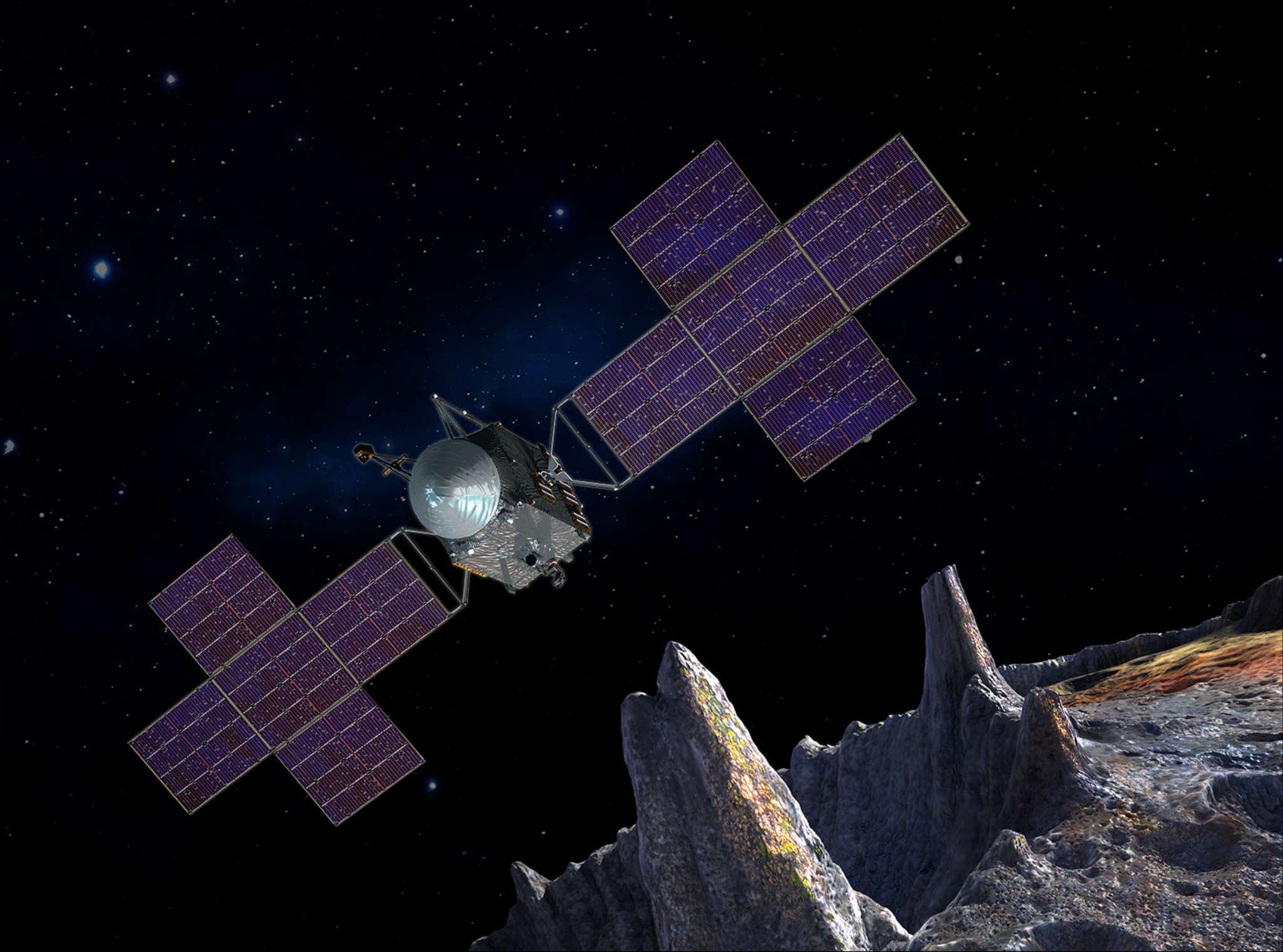
Designed to explore a metal asteroid that could be the heart of a planet, the Psyche mission is readying for a 2022 launch. After extensive review, NASA Headquarters in Washington has approved the mission to begin the final design and fabrication phase, otherwise known as Phase C. This is when the Psyche team finalizes the system design, develops detailed plans and procedures for the spacecraft and science mission, and completes both assembly and testing of the spacecraft and its subsystems.
“The Psyche team is not only elated that we have the go-ahead for Phase C, more importantly we are ready,” said Principal Investigator Lindy Elkins-Tanton of Arizona State University in Tempe. “With the transition into this new mission phase, we are one big step closer to uncovering the secrets of Psyche, a giant mysterious metallic asteroid, and that means the world to us.”
The mission still has three more phases to clear. Phase D, which will begin sometime in early 2021, includes final spacecraft assembly and testing, along with the August 2022 launch. Phase E, which begins soon after Psyche hits the vacuum of space, covers the mission’s deep-space operations and science collection. Finally, Phase F occurs after the mission has completed its science operations; it includes both decommissioning the spacecraft and archiving engineering and science data.
The Psyche spacecraft will arrive at Asteroid Psyche on Jan. 31, 2026, after flying by Mars in 2023.
Asteroid Psyche is one of the most intriguing targets in the main asteroid belt. While most asteroids are rocky or icy bodies, scientists think Psyche is composed mostly of iron and nickel, similar to Earth’s core. They wonder whether Psyche could be the nickel-iron heart, or exposed core, of an early planet maybe as large as Mars that lost its rocky outer layers through violent collisions billions of years ago. If so, it would provide a unique look into the solar system’s distant past, when the kind of high-speed protoplanet encounters that created Earth and the other terrestrial planets were common.
The Psyche mission aims to understand the building blocks of planet formation by exploring firsthand a wholly new and uncharted type of world. Along with determining whether Psyche is the core of an early planet, the team wants to determine how old it is, whether it formed in similar ways to Earth’s core and what its surface is like.
The spacecraft’s instrument payload includes three science instruments. The mission’s magnetometer is designed to detect and measure the remnant magnetic field of the asteroid. The multispectral imager will provide high-resolution images using filters to discriminate between Psyche’s metallic and silicate constituents. Its gamma ray and neutron spectrometer will detect, measure and map Psyche’s elemental composition. The mission also will test a sophisticated new laser communications technology, called Deep Space Optical Communications.
The Psyche mission is part of NASA’s Discovery Program, a series of lower-cost, highly focused robotic space missions. Psyche Principal Investigator Lindy Elkins-Tanton is the director of ASU’s School of Earth and Space Exploration. Other ASU researchers on the Psyche mission team include Jim Bell, deputy principal investigator and co-investigator; David Williams, co-investigator; and Catherine Bowman, co-investigator and student-collaborations lead.
ASU leads the mission. NASA’s Jet Propulsion Laboratory in Pasadena, California, is responsible for the mission’s overall management, system engineering, integration and test, and mission operations. Maxar Space Solutions, formerly Space Systems Loral, in Palo Alto, California, is providing a high-power solar electric propulsion spacecraft chassis.
For more information about NASA’s Psyche mission go to:
D.C. Agle
Jet Propulsion Laboratory, Pasadena, Calif.
818-393-9011
agle@jpl.nasa.gov
Karin Valentine
Arizona State University School of Earth and Space Exploration, Tempe
480-965-9345
karin.valentine@asu.edu
JoAnna Wendel
NASA Headquarters, Washington
202-358-1003
joanna.r.wendel@nasa.gov
2019-109



























